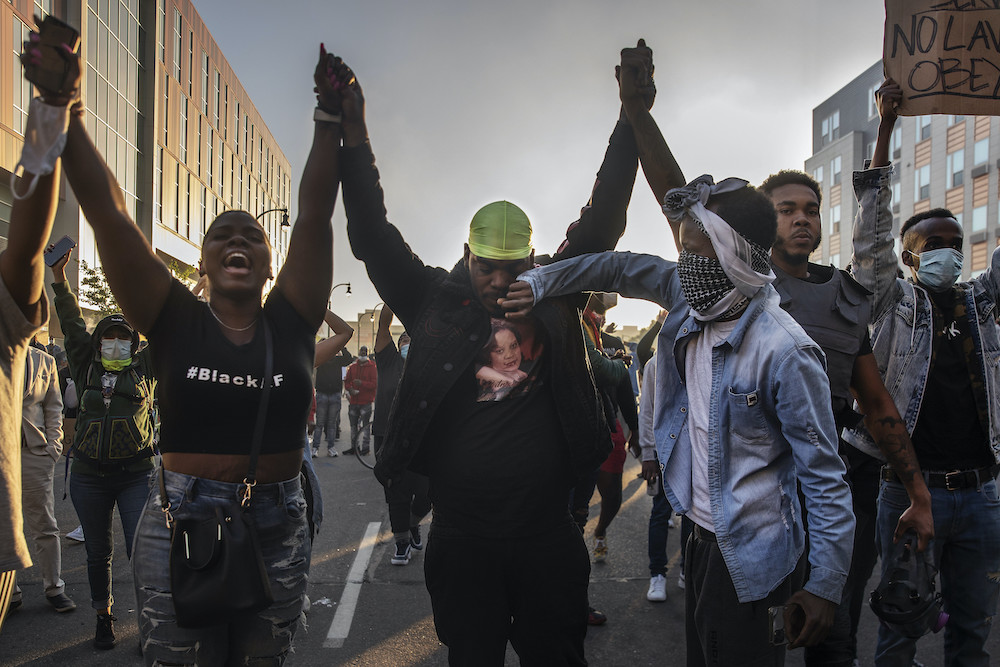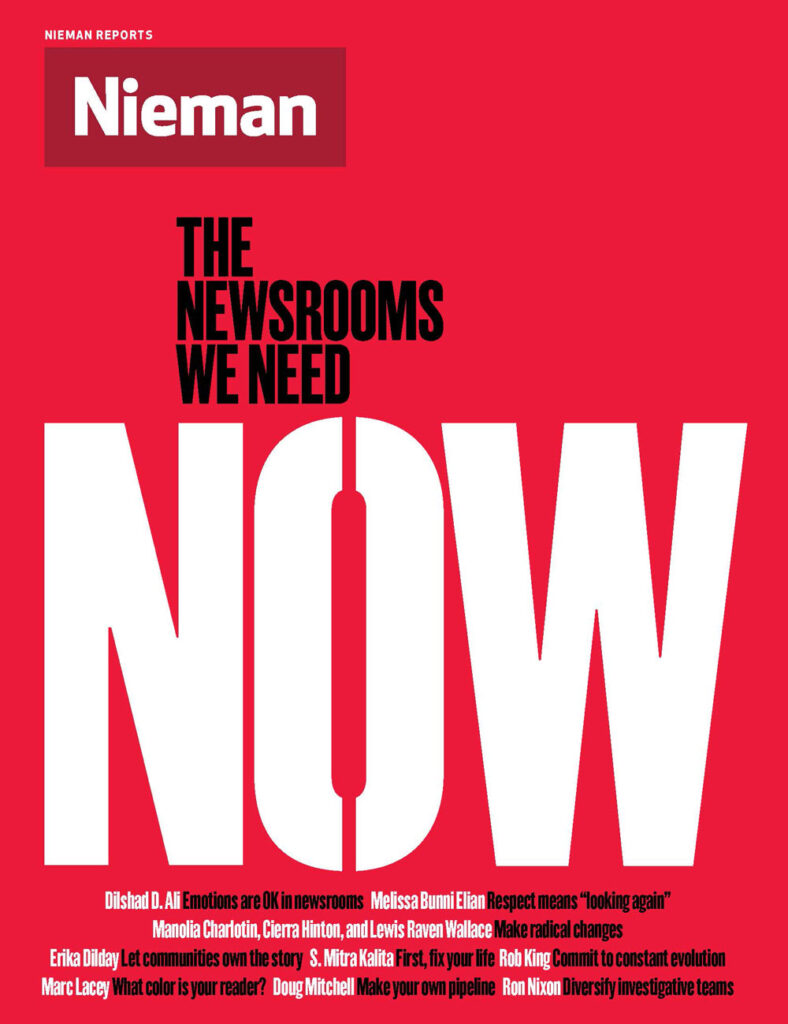During a recent conversation on the ongoing pursuit of racial equity in our workplaces, a colleague asked a question we all should ask ourselves: “How did we get here?”
The answer, of course, is that while many of us heard the terms diversity and inclusion and unconscious bias and microaggressions, while many sat for training about these concepts, while many discussed the words and stipulated to their virtues, only some of us felt these terms. Only some of us thought about these ideas when we left the office and went home, when we went to bed and awoke, while driving or shopping or watching our children at play.
For some of us, fostering racial equity in our newsrooms is our second full-time job. Ironically, we can drop the other gig — the paid gig — on nights, weekends, and holidays. The unpaid gig? We can never clock out.
I learned this lesson before I ever set foot in my first major newsroom job. In 1987, I’d secured a chance to do the only thing I’d dreamt of doing for a living: drawing editorial cartoons. Yeah, the small print on the job assignment also called for me to do graphic design and general assignment reporting, but the cartooning carried the biggest headline (in my head, anyway).
Before making my way to the Midwest metropolis known as Danville, Illinois, I stopped by Gannett headquarters in Arlington, Virginia to visit with family friend and mentor Alice Bonner. She took in my enthusiasm over my cartooning job with a patient smile, and then offered, “That’s nice, Rob. But you realize that there are too few Black people in newsrooms for you to just sit in your office, do your little cartoon, and go home. You’re going to have to be present in that room, and you’re going to have to be there for others.”
I only thought I understood what she meant.
On my first day in Danville — at the age of 24 — I met my best friend.
Alvin A. Reid was two years my senior and one of a handful of African American journalists working at the tiny Commercial-News. Already married and established as a multi-talented reporter, Alvin had a handle on all of the workings of the paper and immediately volunteered to help with my orientation.
That process began with a trip down a flight of stairs to meet the newspaper’s receptionist, who was not a person of color. Near her desk stood a decades-old, wood-paneled check-in system. In a tone that suggested my IQ sat at the range of a 7-year-old, she methodically explained that when I was in the office, I needed to slide a button over beneath the column marked “In,” and when I was out of the office, I needed to slide that button beneath the column marked “Out.”
I couldn’t resist.
“Let me get this straight,” I said. “When I’m in, I should slide this button to the side that says ‘In’?”
“That’s right,” she said.
“And when I’m out, I slide it to the other side?”
“Yes, that’s right.”
“Okay, I think I’ve got it,” I said, sliding the button toward “In.”
On the way upstairs, Alvin said something to the effect of, “Okay, I think I’m in love.”
Without Alvin and his wife Carmen, I wouldn’t have made it through the year, two weeks, and three days I spent in Danville. They dragged me out on weekends and remembered my birthday and listened to my complaints about a dearth of a dating life.
More important, Alvin showed me the way to pay this kindness forward. As young and relatively inexperienced as we were, he and I became the mentors for our Black colleagues, some of whom were even younger and greener and further at sea.
As reporters, Alvin and I wrote quickly and cleanly, which gave us both time to read over the work of our colleagues before sending their pieces to our small, sometimes overburdened copy desk. We spent a lot of time teaching, asking questions, challenging our Black colleagues to abandon the notion that work stopped after hitting “Send.”
We also checked in on them outside of the office. I even let one new hire, a young sportswriter who had to spend his moving allowance on the car he’d need to do his job, stay in my meager apartment for two weeks. When my Dad found out I was feeding him on my $225-per-week salary, he blew a gasket.
I kept thinking about Alice Bonner though, and moved ahead.
As I write this now, her words ring in my head like a form of tinnitus. I think of so many people of color and members of the LGBTQ community who rise to this challenge every day. Some are more senior in their organizations, and many are far more junior and early in their careers.
Despite the ceaseless white noise of dread and disappointment manufactured with nearly every news alert or social post, we, the ones who feel it, clock in day and night, reaching out to one another, working to foster a sense of connection and community essential to withstanding the weight of the paid gig.
I believe we have reason to hope, as this present reckoning has seen flashpoints of progress and greater urgency to listen, to understand, to act. My greatest hope, however, is that we all remain resolute. In general, leaders have a bias toward certainty and measurable results — neither of which come easily in the realm of diversity, inclusion, and fostering a sense of true belonging across the entire workforce.
Progress — true progress — starts with processes that demand humility, admission of frailty, and a steadfast commitment to constant evolution. We have to create work environments that allow people the space to dare to be dumb and acknowledge our gaps in knowledge, awareness, empathy.
And while goals for better representation and responsibility matter greatly, we have to stop thinking about a finish line. There’ll never be a moment when we can all high-five each other and say, “There, that’s done.”
What we can do — all of us — is embrace creating that sense of belonging as a full-time job.
Let’s please get to work.
Rob King is senior vice president and editor-at-large of ESPN Content.
The Newsrooms We Need Now
As American society—and American newsrooms—grapple with an unprecedented time in the country’s racial justice movement, Nieman Reports is publishing a series of essays about how journalism should respond to the challenges of the moment, from accelerating journalists of color moving into senior decision-making roles to improving coverage of racism and white supremacy.




